Instructions for Side by Side Printing
- Print the notecards
- Fold each page in half along the solid vertical line
- Cut out the notecards by cutting along each horizontal dotted line
- Optional: Glue, tape or staple the ends of each notecard together
Anatomy of the Arteries of the Trunk - Lecture 5
front 1 Define the difference between pulmonary and systemic circulation | back 1 Pulmonary circulation is this which involves the SVC, IVC, RA, RV, Pulmonary trunk and pulmonary arteries in which deoxygenated blood is pumped to the lungs for oxygenation Systemic circulation involves the pulmonary veins, LA, LV and aorta, in which oxygenated blood is distributed around the rest of the body, including the hear itself |
front 2 Describe what an anastomoses is and the types that occur | back 2  Anatomoses
Types
|
front 3 Briefly outline what a portal system is | back 3 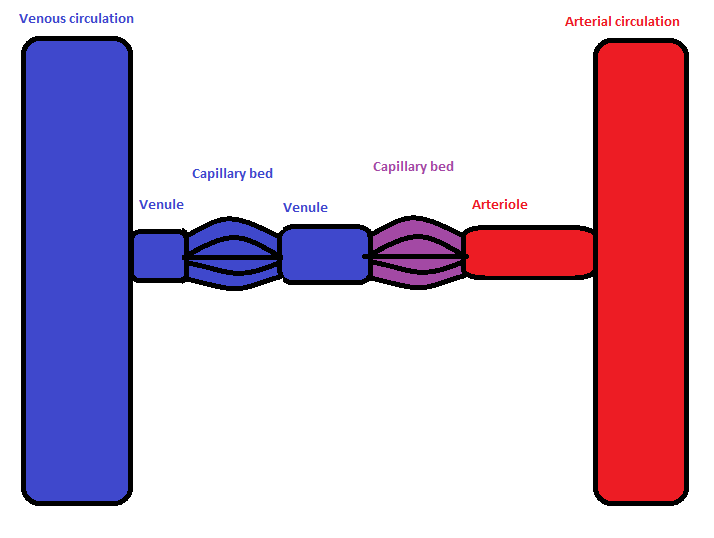 A portal system is where a vein or arteriole connect two capillary networks, one capillary bed drains into another This occurs in the hepatic portal system in which the hepatic portal veins connect capillaries of the intestine to liver sinusoids (capillaries) The efferent arteriole in the kidney glomerulus, drains glomerular capillaries of the kidney into peritubular capillaries around cortical renal tubes |
front 4 What is meant by a vasa vasorum | back 4 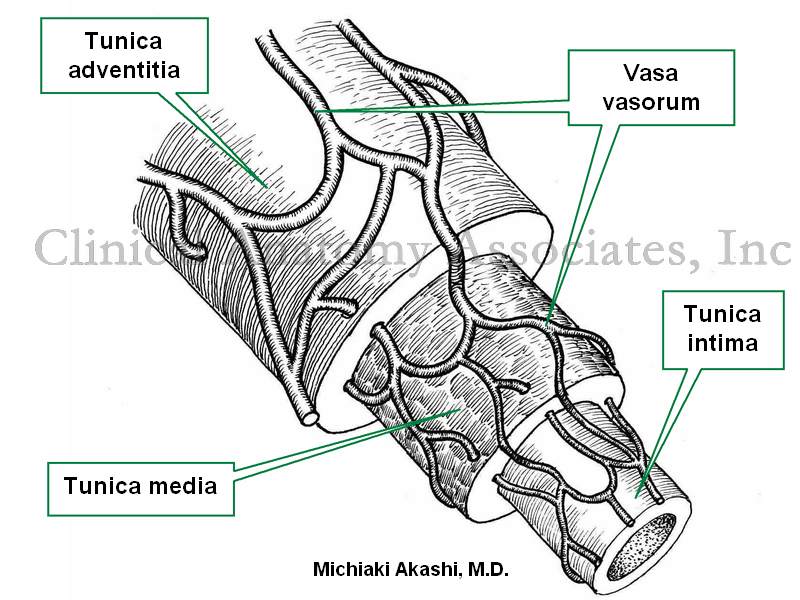 The connection of blood vessels that surround larger blood vessels (such as arteries) and supply the vascular smooth arterial muscle with blood Seen as a tracery of fine purple thread on the outer surface of arteries The arterial blood within the vasa vasorum is from the artery itself (vasa vasorum internae) Venous drainage occurs back into the artery Undergo pathological changes in réponse to infection, artherosclerosis or injury |
front 5 Why don't arteries have valves | back 5  In the arterial system there is enough +ve pressure to prevent back flow of blood Valves only occur at the pulmonary and aortic valve, though these are needed to allow proper systole to occur Veins have valves as at times there can be -ve pressure within them which would cause a back flow of blood |
front 6 Describe the function and location of the pulmonary veins are arteries | back 6 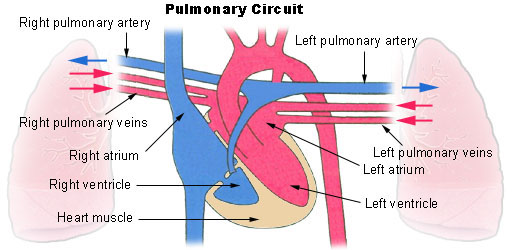 R.Pulmonary artery
L.Pulmonary artery
Pulmonary veins
|
front 7 Describe the branches that arise from the ascending aorta | back 7 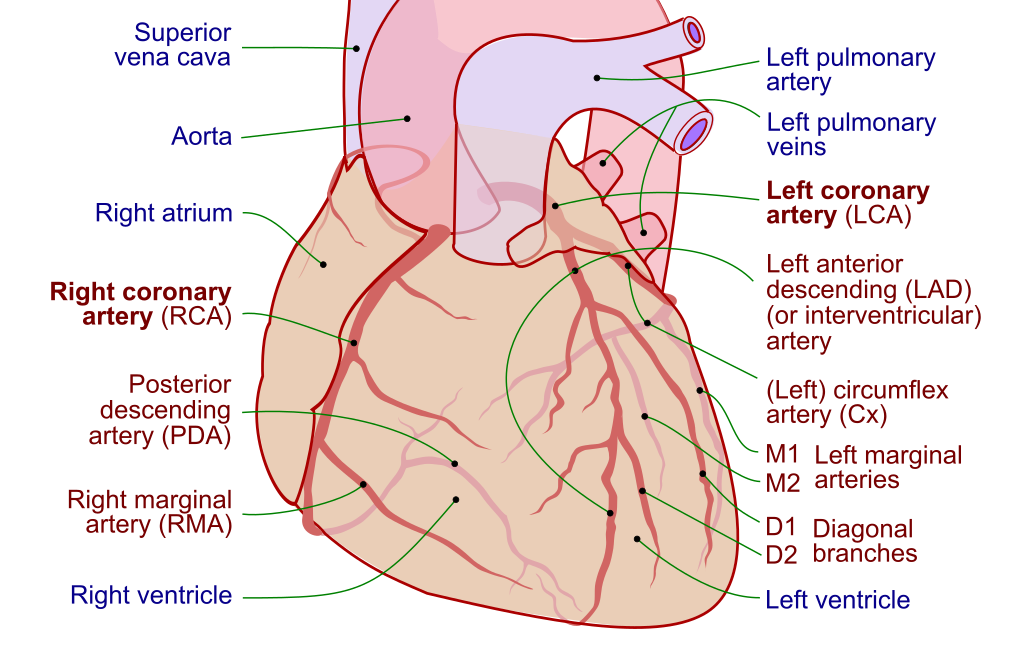 L. and R. Coronary arteries
|
front 8 Describe the branches that arise from the arch of the aorta | back 8 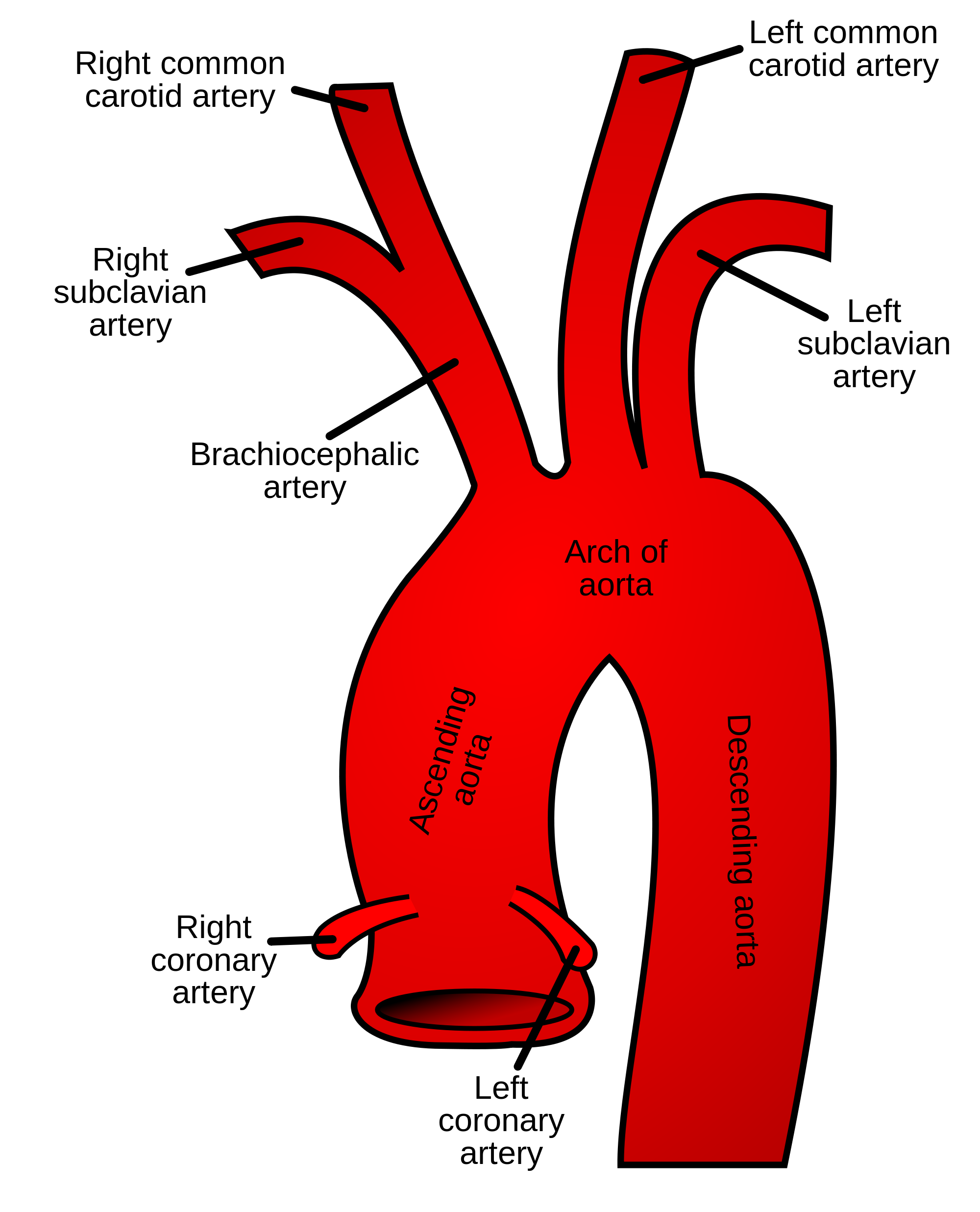 Right side of aortic arch
Left side of aortic arch
|
front 9 Describe the features of the thoracic (descending) aorta | back 9  Anterior to vertebral column and azygous vein Oesophagus initially on the right then moves to the left inferiorly Lateral branches
Anterior branches
Descends into the diaphragm at T12 |
front 10 Describe the features of the abdominal aorta | back 10 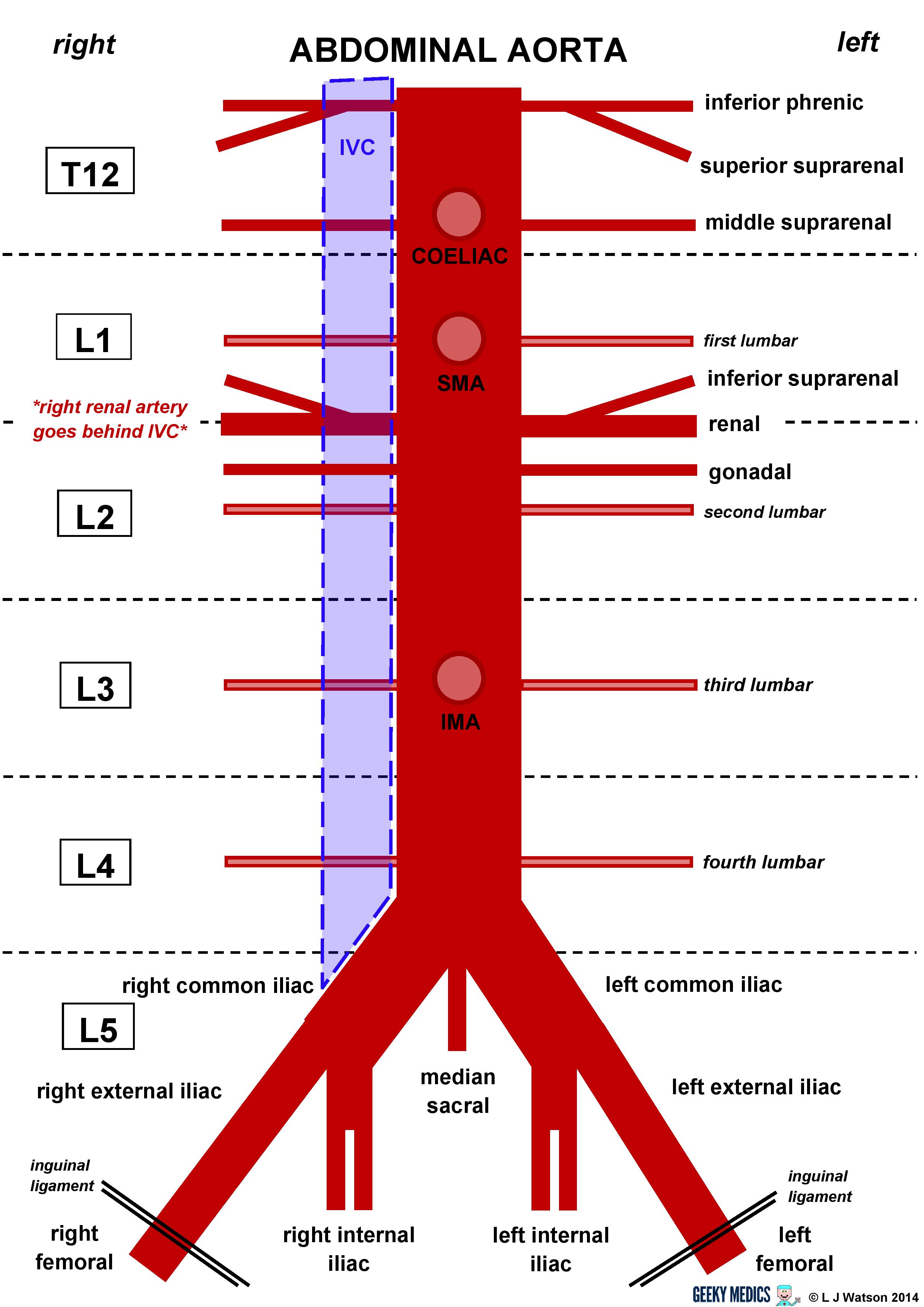 Inferior Phrenic
Celiac
Superior mesenteric
Middle suprarenal
Renal
Gonadal
Lumbar
Inferior mesenteric
Median sacral
Commom iliac
|
front 11 What is the thoracic wall | back 11 It is the boundary of the thoracic cavity |
front 12 Describe the functioning of the Internal Thoracic Artery (Internal Mammary Artery) | back 12  Arises from the subclavian artery Runs down the postero-lateral sides of the sternum, outside the parietal pleura and internally to the ribcage
Branches to adjacent thoracic structure
Internal thoracic terminates through its bifurcation to the musculophrenic artery and the superior epigastric artery Collateral branch of the posterior intercostal artery (Anterior Intercostal Artery) goes upon the superior border of the inferior rib |
front 13 Describe the superior epigastric artery | back 13  The superior epigastric arises from the bifurcation of the internal thoracic artery at the level of 6th-7th costal cartilage Accompanied by the superior epigastric vein Anterior to the transverse abdominis muscle and perforates the rectus abdominis muscle
Anastomoses with Inferior epigastric artery at the umbilicus |
front 14 Describe the Inferior Epigastric Artery | back 14 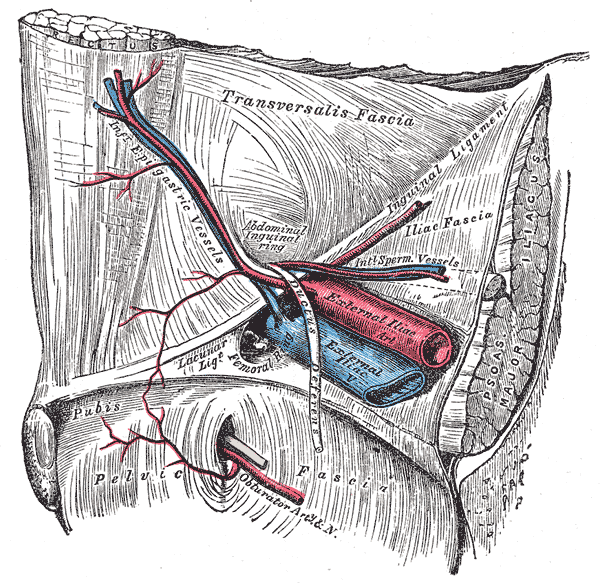 Arises from external iliac artery above the inguinal ligament Anastomoses with the superior epigastric artery above the umbilicus and the lower intercostal arteries Pierces transversalis fascia, pases infant of linea semicircularis, between rectus abdominus and the posterior lamina of its sheath |
front 15 Describe the musculophrenic artery | back 15  Provides the lowest 5 paired anterior intercostal arteries Provides fine branches to supply the superior anterior abdominal wall Anastomoses with the posterior intercostal arteries and the superior epigastric |
front 16 Describe surface anatomy points of the thoracic and abdominal walls | back 16  Sternal angle = underside of aortic arch Centre point of manubrium = Brachiocephalic artery arises Sternoclavicular joint = 2cm above for internal thoracic artery from subclavian arteries 1cm Lateral to sternal margin = Internal throracic artery Transpyloric plane/L1 = Superior mesenteric artery, celiac trunk 1cm superiorly L3 = Inferior mesenteric artery, 3-4cm above aortic bifurcation L4 = Aortic bifurcation into common iliac arteries |